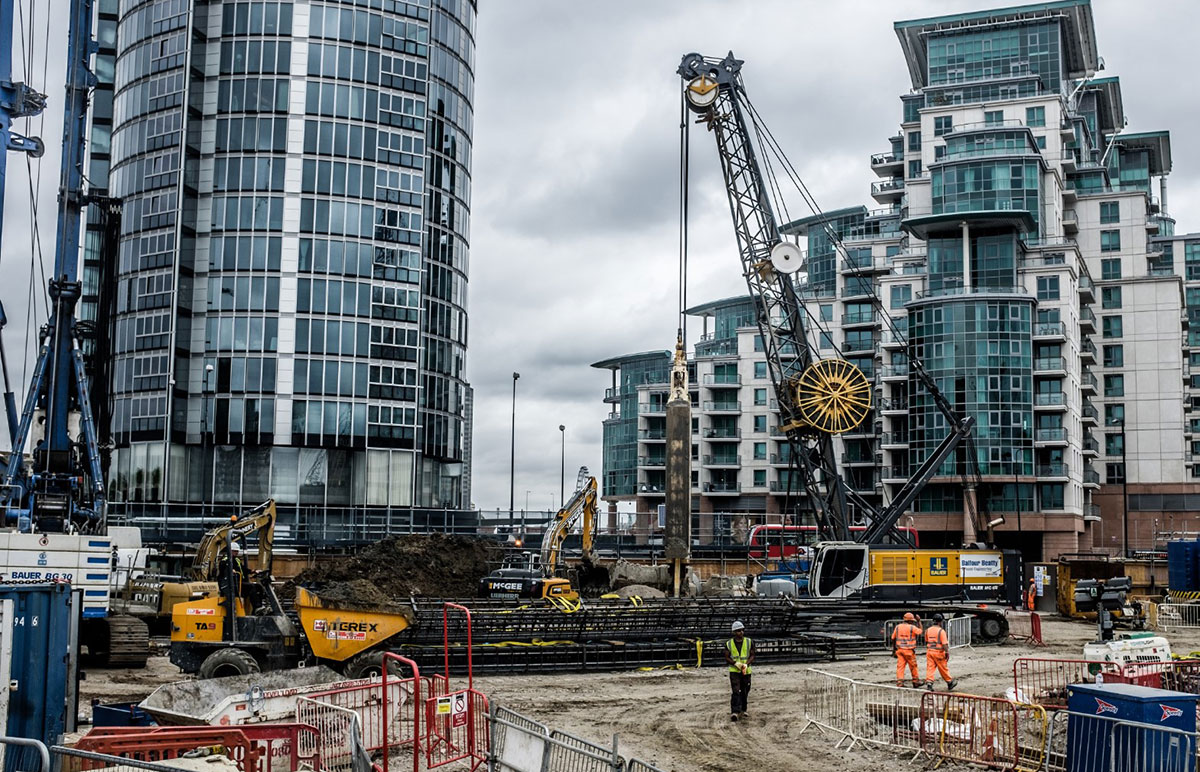The Basic Principles Of Geotheta
The Basic Principles Of Geotheta
Blog Article
The smart Trick of Geotheta That Nobody is Discussing
Table of ContentsThe Of Geotheta10 Easy Facts About Geotheta ShownThe Only Guide for GeothetaGeotheta Can Be Fun For Anyone
They team up with civil designers, structural engineers, engineers, and various other experts to incorporate geotechnical factors to consider into the overall task style and building procedure. This needs efficient teamwork, control, and communication to ensure that the geotechnical facets line up with the job objectives and fulfill regulative requirements.Mining & Products Engineering: Concepts of drilling, infiltration prices, and aspects affecting the selection of boring method. Features of dynamites, firing systems and blast patterns. Blowing up techniques in surface area and below ground functions. Unique blasting strategies at excavation perimeters. Resonance and noise control. Mechanical and continual methods to fragmentation, consisting of longwall shearing and fullface boring.
Modelling of piece and fragment size distributions; comminution as a transfer feature. Comminution technology: crushing, grinding, dimension category. Integrated analysis of fragmentation and comminution procedures. Used by: Mining & Products Design.
The smart Trick of Geotheta That Nobody is Discussing
Bachelor's level programs in civil, geotechnical, geological, and environmental engineering typically last four years and consist of general education and learning courses in English, social science, and the liberal arts, in addition to programs in innovative mathematics, structural geology, and liquid mineralogy. (https://www.abnewswire.com/companyname/geotheta.com_139529.html#detail-tab)
Geotechnical design includes the evaluation of the soil and rock conditions at a specific website, and their effects for the growth of that website. As many structures count on the ground for assistance, it is without surprise that an in-depth understanding of the ground conditions, and the suitability of foundation systems, are important to the long-lasting stability and performance of the structure or structure.
Specialising in the investigation of geological developments and ground behavior, geotechnical engineers do clinical examinations and testing to comprehend the effect these geological formations might carry the style and building of structure, civil and infrastructure projects. This proficiency is important for the layout and building and construction of structures, roadways, tunnels, dams, bridges, and supply of water and sewer system.
The geotechnical group at Douglas Allies routinely seek advice from designers, layout designers, designers, and home builders to make referrals on design and advancement propositions to guarantee that the constructed structures are appropriately created for the ground problems. As an example, the design of footing systems needs to consider the weight of the structure, the ability of the ground to sustain that weight along with movement resistances and reliable building and construction.
The Basic Principles Of Geotheta
This task is significantly simplified by the use of our Douglas Map geospatial platform which makes this information readily obtainable in a very easy to utilize internet browser interface. A geotechnical engineer will certainly direct the drilling of boreholes and examination pits to gather dirt and other samples, and also analyze surface area features and ground direct exposures to create a geotechnical model of the subsurface conditions.
Relying on the task type and ground conditions encountered, research laboratory testing may to name a few things assess toughness, compressibility, reactivity and/or permeability of dirt and rock examples. Hereafter data is accumulated and collated, the outcomes are made use of for a geotechnical design of the site, which is usually provided as areas across the website.

A geotechnical investigation by nature can just evaluate the ground problems at the places drilled or excavated. All-natural variations in dirt and rock conditions can take place throughout a website and in between examination locations. It is therefore excellent method that the geotechnical engineer be preserved throughout building of the task to give on-site verification that the ground conditions run into follow the assumptions and suggestions provided in the geotechnical investigation record.
Top Guidelines Of Geotheta
Geotechnical engineers utilize their thorough expertise of dirt and rock to examine danger and resolve troubles on varied infrastructure projectsGeotechnical engineering is a specialist branch of civil design which takes a look at the behavior of earth products and the application of dirt and rock auto mechanics. Consulting Engineer. As a geotechnical engineer, you will certainly examine the physical, mechanical and chemical homes of dirt and rock in order to develop foundations, preserving frameworks and earthworks
Geotechnical engineering is carefully linked to and overlaps with, both engineering geology and ground design - https://forums.hostsearch.com/member.php?265240-geotheta. It's feasible to be experts in geotechnics or job for a geotechnical firm however be referred to as an engineering geologist or a ground engineer. As a geotechnical engineer, you'll need to: develop and keep connections with clients and other experts associated with the site, throughout each projectmaintain safety and security criteria on website bear in mind expense implications when you make recommendationsstudy geological maps and airborne photos from a series of sources and from various time periodsexamine construction plans to see just how viable they are based on your understanding of the siteinvestigate risks or geological threats for the sitesearch for environmentally sensitive functions, such as garbage dump begin to create factual and interpretive ground modelsplan field investigationsdrill and analyse examples of bedrock, dirt, groundwater and extra materials supervise various other specialists on sitesolve technical issues as they develop, such as unanticipated frameworks at drill sitesmonitor conditions during and after construction to make sure structures are steady check in the brief and lengthy termadding data gathered on site to your preliminary researchcreating geotechnical calculations, illustrations, and 2 or three-dimensional computer system designs analyzing the datamaking recommendations regarding the proposed use of the website

Report this page